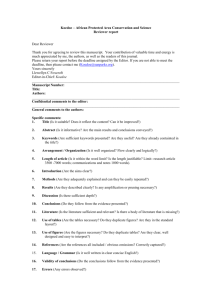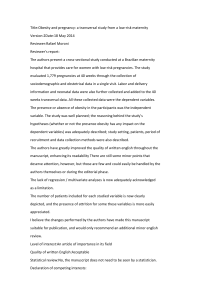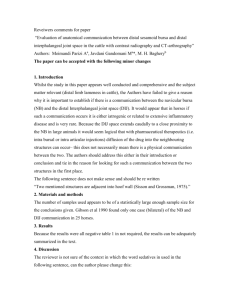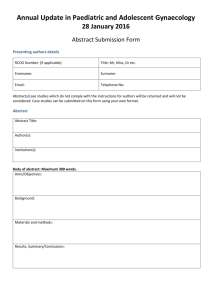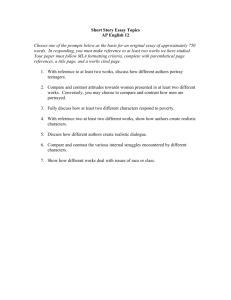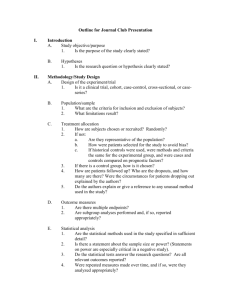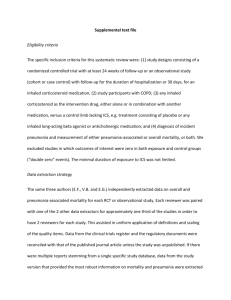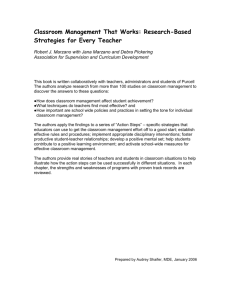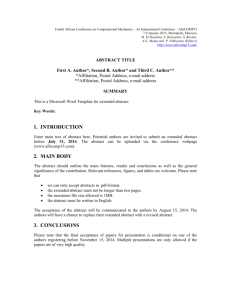BioMed Central Editorial
advertisement
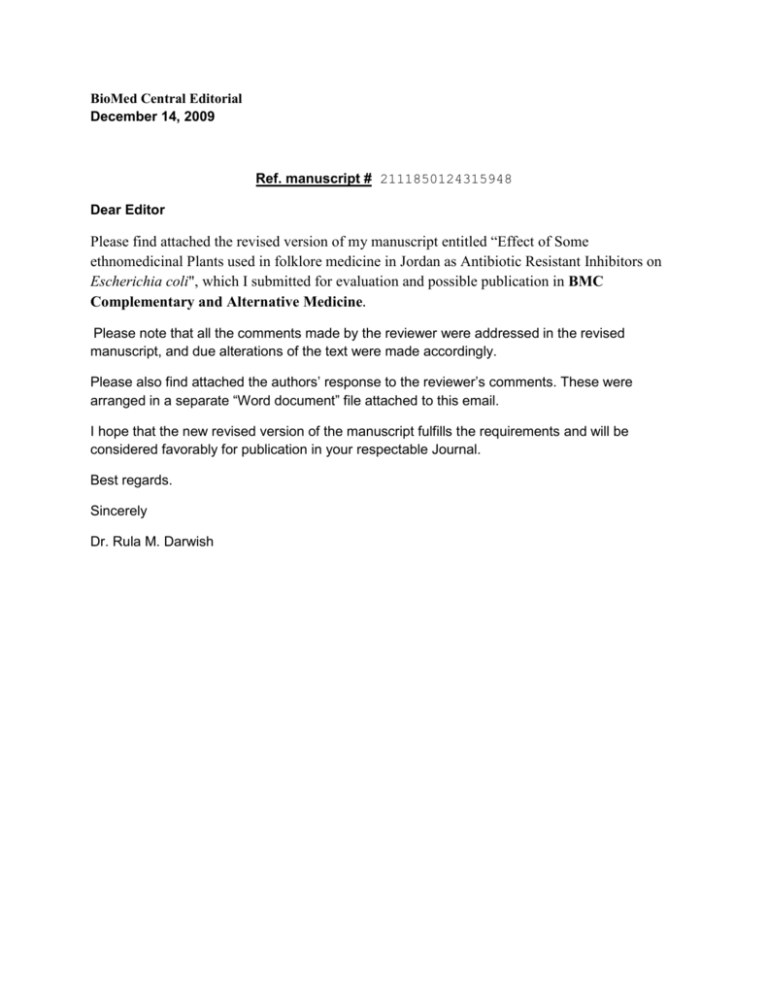
BioMed Central Editorial December 14, 2009 Ref. manuscript # 2111850124315948 Dear Editor Please find attached the revised version of my manuscript entitled “Effect of Some ethnomedicinal Plants used in folklore medicine in Jordan as Antibiotic Resistant Inhibitors on Escherichia coli", which I submitted for evaluation and possible publication in BMC Complementary and Alternative Medicine. Please note that all the comments made by the reviewer were addressed in the revised manuscript, and due alterations of the text were made accordingly. Please also find attached the authors’ response to the reviewer’s comments. These were arranged in a separate “Word document” file attached to this email. I hope that the new revised version of the manuscript fulfills the requirements and will be considered favorably for publication in your respectable Journal. Best regards. Sincerely Dr. Rula M. Darwish Authors’ Response to Reviewer’s Comments Reviewer’s Comment 1-The reviewer stated that the scientific names used in the text must be written in Italic. Authors’ Response The scientific names used in the text have been revised. Reviewer’s Comment 2- Correct the name of Chloramphenicol. Authors’ Response The name of Chloramphenicol has been corrected. Reviewer’s Comment 3-The selected plants were either collected from the field or purchased from the local market (Table 1)... This information is on table 2. Authors’ Response This information has been placed on the right table as required. Reviewer’s Comment 4- On the table 2, the author must present the voucher number of all plants used. Please, correct this point replacing the M by the voucher number. Authors’ Response The M has been replaced by the voucher number and presented in table 1 Reviewer’s Comment 5- The concentration of UFC after the inoculum remains 106? Not be105? Authors’ Response The concentration has been adjusted to be 105 Reviewer’s Comment 6- Which the range was used to determine the MIC of the antibiotics? Authors’ Response The concentration ranges used to determine the MIC of the antibiotics were: Amoxycillin 0.12– 32 μg/ml, Chlormphenicol0.5- 30 μg/ml, Nalidixic acid 0.12–16 μg/ml, Cephalexin0.5– 42 μg/ml, Neomycin 2–256 μg/ml, Doxycycline0.5–128 μg/ml and Clarithromycin0.5– 160μg/ml.These concentration ranges has been included in the text under "Antimicrobial susceptibility test" section Reviewer’s Comment 7- What the MIC of the plant extracts? Authors’ Response We used a concentration (200μ g/ml) of the plant material which doesn’t inhibit the bacterial growth based on preliminary data. Our study aims for finding plant material which might reverse bacterial resistance thus increase the inhibitory effect of the antibiotics used. The plants were used in this study as modifier of antibiotic activity. Reviewer’s Comment 8- The author did not presented any discussion about his results. I recommend a search on pubmed by the article of Gunics, Molnar and Coutinho. These authors published several authors using plants, any of the same families used on this study as modifier of antibiotic activity. I think that using these articles and the others cited by the authors, an interesting discussion can be made. Authors’ Response The results have been discussed and the articles mentioned by the reviewer have been referred to in the discussion. Reviewer’s Comment 9-The authors should add information about the selected plants Authors’ Response Information about the selected plants has been added to Table 1. Reviewer’s Comment 11- What are the concentrations of plant extracts and antibiotics used for this study? It should be included in the text and tables 3 and 4. Authors’ Response The concentrations of plant extracts was (200μ g/ml) as mentioned in Methods section "Determination of the resistant inhibitory effect in vitro". The antibiotics concentrations used were half the MICs which are presented in Table 2 and in section "Determination of the resistant inhibitory effect in vitro". These concentrations were used so as not to have the effect of the antibiotic or the plant on their own. This information has been included in the text and tables 3 and 4. Reviewer’s Comment 12- Why the authors used only ethanol for extraction? It should be justified by the authors. Authors’ Response We used Methanol as is a semi polar solvent and is used in extracting polar and apolar compounds simultaneously. Reviewer’s Comment 13- Did they do any preliminary phytochemical analysis for plant extracts? This study will be useful to proceed further. Authors’ Response A detailed phytochemical investigation of the used plants is now in progress in our laboratory. Reviewer’s Comment 14- Authors have used ethanol for solvent as dissolving agent. The authors should screen antibacterial activity of ethanol as negative control. Authors’ Response The antibacterial activity of ethanol as negative control is presented in the material and method section under the heading “Determination of the resistant inhibitory effect in vitro’ Reviewer’s Comment 15- Authors have used nearly 19 plants for the present study, they should give the yield of the extracts in table 2. Authors’ Response The yield of the extracts has been added to Table 1 Reviewer’s Comment 16- Line no 4; ‘A tested preparation’ should be changed as ‘A test sample’ Authors’ Response A tested preparation’ has been changed to ‘A test sample’
